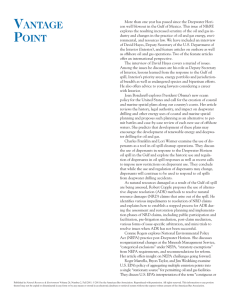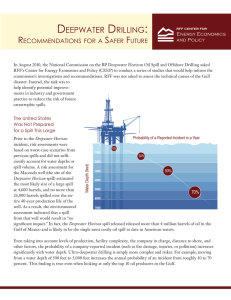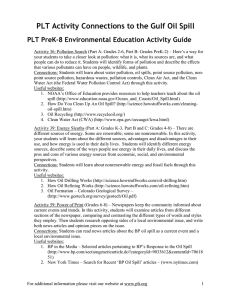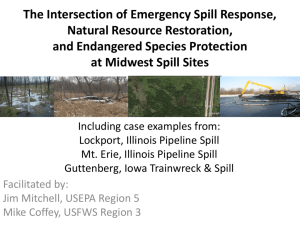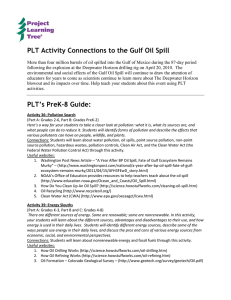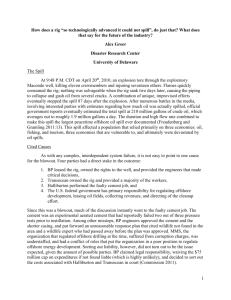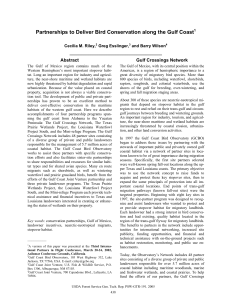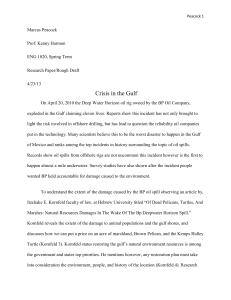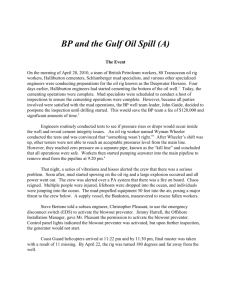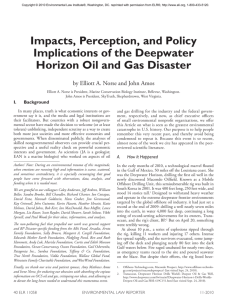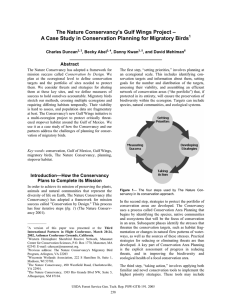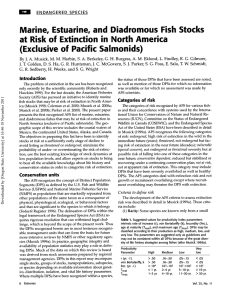SCIENCE BULLETIN: OIL SPILL`S OTHER VICTIMS Questions Oil
advertisement
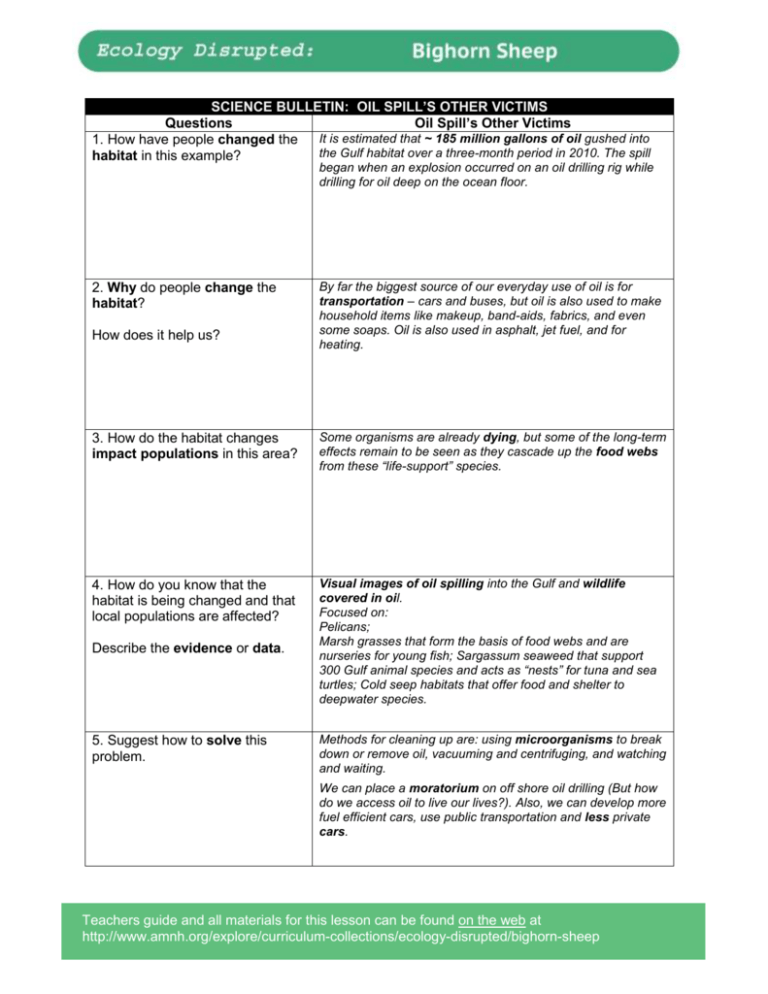
SCIENCE BULLETIN: OIL SPILL’S OTHER VICTIMS Questions Oil Spill’s Other Victims It is estimated that ~ 185 million gallons of oil gushed into 1. How have people changed the the Gulf habitat over a three-month period in 2010. The spill habitat in this example? began when an explosion occurred on an oil drilling rig while drilling for oil deep on the ocean floor. 2. Why do people change the habitat? How does it help us? By far the biggest source of our everyday use of oil is for transportation – cars and buses, but oil is also used to make household items like makeup, band-aids, fabrics, and even some soaps. Oil is also used in asphalt, jet fuel, and for heating. 3. How do the habitat changes impact populations in this area? Some organisms are already dying, but some of the long-term effects remain to be seen as they cascade up the food webs from these “life-support” species. 4. How do you know that the habitat is being changed and that local populations are affected? Visual images of oil spilling into the Gulf and wildlife covered in oil. Focused on: Pelicans; Marsh grasses that form the basis of food webs and are nurseries for young fish; Sargassum seaweed that support 300 Gulf animal species and acts as “nests” for tuna and sea turtles; Cold seep habitats that offer food and shelter to deepwater species. Describe the evidence or data. 5. Suggest how to solve this problem. Methods for cleaning up are: using microorganisms to break down or remove oil, vacuuming and centrifuging, and watching and waiting. We can place a moratorium on off shore oil drilling (But how do we access oil to live our lives?). Also, we can develop more fuel efficient cars, use public transportation and less private cars. Teachers guide and all materials for this lesson can be found on the web at http://www.amnh.org/explore/curriculum-collections/ecology-disrupted/bighorn-sheep









